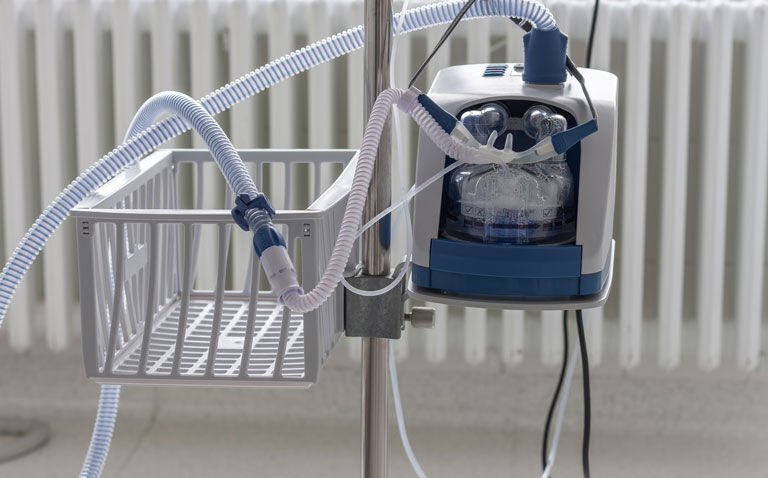High-flow nasal cannula therapy is equivalent to continuous positive airway pressure for release time from respiratory support in children
The use of high-flow nasal cannula (HFNC) therapy as a first-line non-invasive respiratory support system appears to be non-inferior to continuous positive airway pressure (CPAP) for the time to liberation of respiratory support in critically ill children. This was the conclusion of a randomised trial by UK researchers.
Respiratory distress is common cause of paediatric intensive care unit admission and strategies to address oxygenation problems in critically ill patients with hypoxemic respiratory failure include use of simple oxygen equipment, use of non-invasive ventilation, or use of invasive ventilation.
Non-invasive mechanical ventilation procedures include CPAP whereas HFNC is considered as a cross over therapy from basic oxygen therapy to non-invasive ventilation. In a systemic review, HFNC was shown to reduce the rate of intubation, mechanical ventilation and the escalation of respiratory support.
However, whether or not HFNC is superior to other forms of non-invasive respiratory support such as CPAP with respect to the length of time required for such respiratory support in acutely ill children remains to be determined.
In a feasibility study in 2018 designed to compare HFNC with CPAP, it was concluded that such a trial would be possible. Following on from this initial study, for the present trial, the UK team set out to determine if HFNC was comparable to CPAP in terms of to the time to liberation from respiratory support in acutely ill children admitted to a paediatric critical care unit.
In their pragmatic, unblinded trial, the researchers randomised children 1:1 to receive either HFNC or CPAP although physicians were permitted to switch from HFNC to CPAP (or visa versa) where they felt it would be clinically appropriate.
The primary outcome of interest was the time from randomisation to liberation from respiratory support, defined as the start of the 48-hour period during which the patient was free from all respiratory support.
For their secondary outcomes, the authors focused on several outcomes including the duration of stay within the critical care unit, mortality and use of sedatives during non-invasive respiratory support.
HFNC therapy outcomes
A total of 573 children with a median age of 9 months (39% girls) were included and randomised to either HFNC (295) or CPAP. The most common reasons for intensive care admission were in the HFNC group were bronchiolitis (48.5%) or another respiratory condition (18.6%) and these proportions were similar in the CPAP group.
The median time to liberation of respiratory support in the HFNC group was 52.9 hours compared to 47.9 hours in the CPAP group and this difference was not statistically significant (hazard ratio, HR = 1.03, 95% CI 0.86 – 1.22).
For the secondary outcomes the use of sedatives during respiratory support were significantly less for children using HFNC (odds ratio, OR = 0.59, 95% CI 0,39 – 0.88), as was the mean duration of their critical care stay (mean difference = – 3 days) and the mean duration of hospital day (mean difference = -7.6 days).
The authors concluded that HFNC was non-inferior to CPAP with respect to the liberation of respiratory support.
Citation
Ramnarayan P et al. Effect of High-Flow Nasal Cannula Therapy vs Continuous Positive Airway Pressure Therapy on Liberation From Respiratory Support in Acutely Ill Children Admitted to Pediatric Critical Care Units: A Randomized Clinical Trial JAMA 2022










